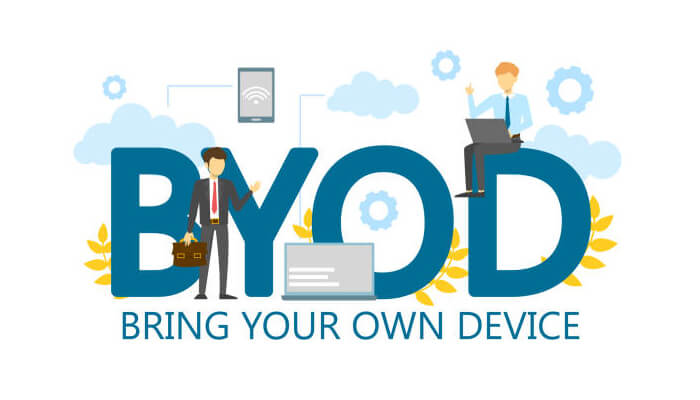Introduction
The policy is known as bring your own device (BYOD) permits employees to use their digital phones for work-related activities. Phones, desktop computers, tablets, and USB drives are examples of personal electronics. BYOD is currently popular in the business world. Employers permitted 59% of workers to use their personal devices for work-related functions in 2017, and this pattern has only gotten stronger in the years thereafter.
To learn more about Bring Your Own Device, keep reading. We are going to share the BYOD advantages and disadvantages advantages and disadvantages to the workplace.
Advantages of the Bring Your Own Device to the Workplace
The data indicates negative. In reality, the tale they relate illustrates the astonishing success of personal smartphones in the business world. They are being discussed below:
1. Productivity
Based on a Forbes poll, 49% of workers feel they are more efficient while using their own gadgets. Workers generally avoid using a gadget they are uncomfortable with to communicate. It is essential to provide your staff access to a useful and functional device. Managing security on digital phones is more complicated. Even if it just happens during work hours, placing restrictions on an employee’s personal device feels like an invasion of privacy.
2. Flexibility
Employees can operate from any location without the need for extra options by being given the freedom to utilize their own devices to view work-related information. Additionally, a BYOD policy allows the business more freedom, which is important for job happiness and healthy motivation. One of the primary motivators for employee happiness is flexibility, which can also boost commitment, morale, and involvement.
3. Monetary Savings
BYOD allows companies save some money by avoiding the need to purchase devices for every worker. Three costs can be cut by BYOD: hardware, telecoms, education and assistance.
Disadvantages of the Bring Your Own Device to the Workplace
The following are some of the top disadvantages of bringing your own devices to the workplace.
1. Security
An organization may mandate ongoing monitoring of staff gadgets that have been registered with the corporation. Organizations that implement a BYOD programme must accept the fact that they may lose control over the proper handling of employee devices.
2. Software Problems
A business might utilize particular software to complete particular projects. Employees using their own devices occasionally may run into issues with the software’s setup or usage procedures.
3. Retrieve data
To avoid any potential information abuse, it could be required to delete private company data from an employee’s computer when they leave the organization. Since it could be perceived as an intrusion of the employee’s confidentiality and there is a duty to preserve employee personal data, this could be rather difficult.
4. A Lack Of Coherence
Some employees may still be using laptops or smartphones from 2008, while others may be utilizing cutting-edge technology. Even though BYOD policies save businesses money, there are additional end-user support expenses to cover. There could be 8 distinct devices supported by six different operating systems for a group of ten employees. It could be tough to be able to assist them when they run into certain problems.
Conclusion
Before launching a BYOD program, you should weigh the advantages and disadvantages. Although this approach can boost productivity and save money, it also promotes gadget familiarity. You ought to be conscious of the risks it may pose to the organization. Employees and employers may thoroughly comprehend the policies and risks of a BYOD program before implementing it in order to become acquainted with these important benefits and drawbacks.






